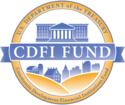How Should I Spend My Stimulus Check?
The stimulus checks promised in the Coronavirus Aid, Relief and Economic Security (CARES) Act are starting to land in checking accounts and mailboxes around the country. The $1,200 granted to most middle-class adults is a welcome relief during these financially trying times.
Many recipients may be wondering: What is the best way to use this money?
To help you determine the most financially responsible course of action to take with your stimulus check, Resource One has compiled a list of advice and tips from financial experts and advisers on how to use this money.
Cover your necessary life expenses
First and foremost, make sure you can afford to cover your necessities. With millions of Americans out of work and lots of them still waiting for their unemployment insurance to kick in, many people are struggling to put food on their tables. Most financial experts agree that it’s best not to make any long-term plans for stimulus money until you can comfortably cover everyday expenses.
Charlie Bolognino, CFP and owner of Side-by-Side Financial Planning in Plymouth, Minn., says this step may necessitate creating a new budget that fits the times. With unique spending priorities in place, an absent or diminished income, and many expenses, like subscriptions and entertainment costs, not being relevant any longer, it can be helpful to reconfigure an existing budget to better suit present needs. As always, basic necessities, such as food and critical bills, should be prioritized.
Build up your emergency fund
If you’ve already got your basic needs covered, start looking at long-term targets for your stimulus money.
“I would immediately place this money in my emergency fund account,” says Jovan Johnson, CEO of Piece of Wealth Planning in Atlanta.
Emergency funds should ideally be robust enough to cover 3-6 months’ worth of living expenses. If you already have an emergency fund, it may have been depleted during the pandemic and need some replenishing. If you don’t yet have an emergency fund or your fund isn’t large enough to cover several months without a steady income, you may want to use some of the stimulus money to build it up, so you have a cushion to fall back on during lean times that are likely to come in the months ahead.
Pay down high-interest debts
According to the Federal Reserve Bank, Americans owed a collective $930 billion in credit card debt during the fourth quarter of 2019. Using some of your stimulus check to pay off high-interest debt would be a great way to get a guaranteed return on the money, says Chris Chen, of Insight Financial Strategists in Newton, Mass.
This advice only applies to credit cards and other private, high-interest loans. The federal government put a 6-month freeze on most student loan debts, so they should not be as high a priority right now.
Boost your savings
If your emergency fund is already full and you’ve made headway on your debt, it can be a good idea to use some of the stimulus money to add to your Resource One savings account. The money in your savings can be used to cover long-term financial goals, such as funding a dream vacation or covering the down payment on a new home.
Consider all your options before choosing how to spend your stimulus money. In all likelihood, this will be a one-time payment received during the pandemic. We’ll be happy to help you maintain financial stability during these uncertain times.





